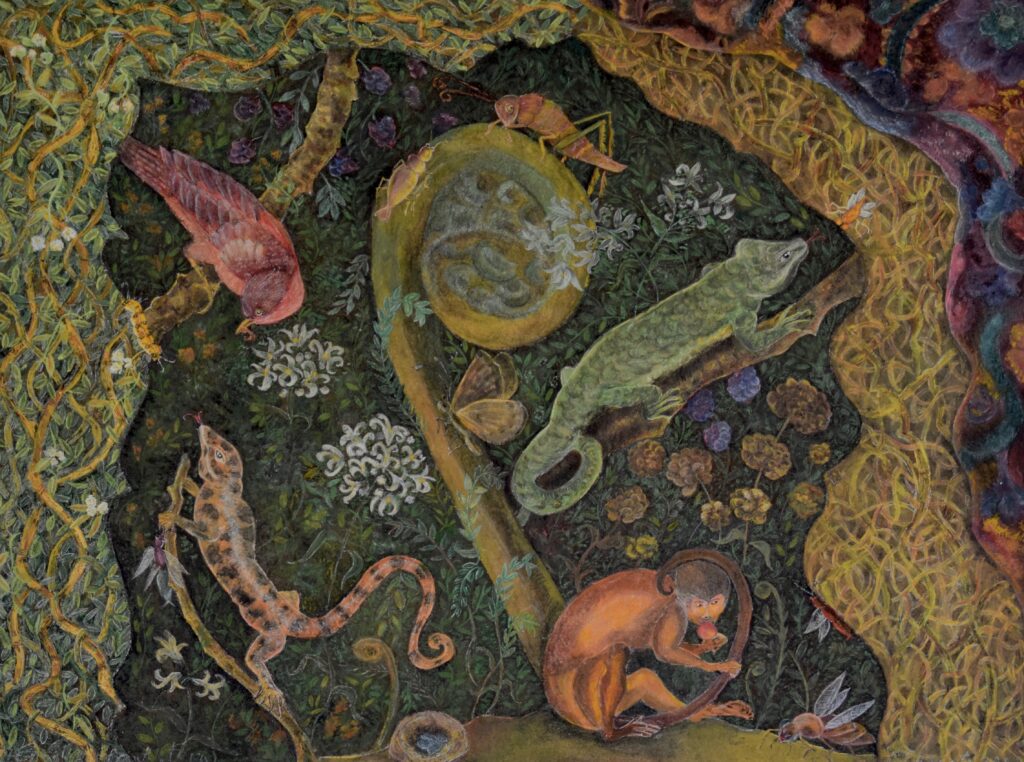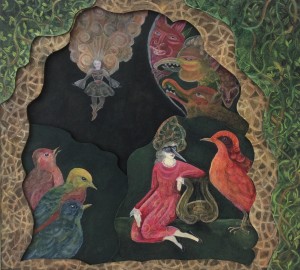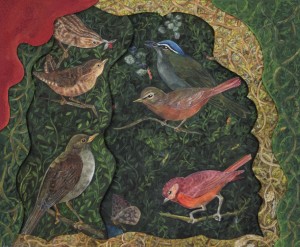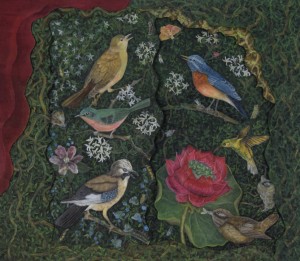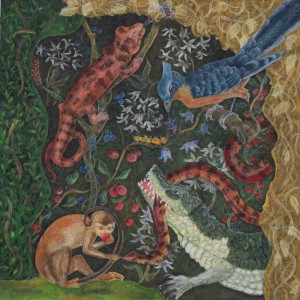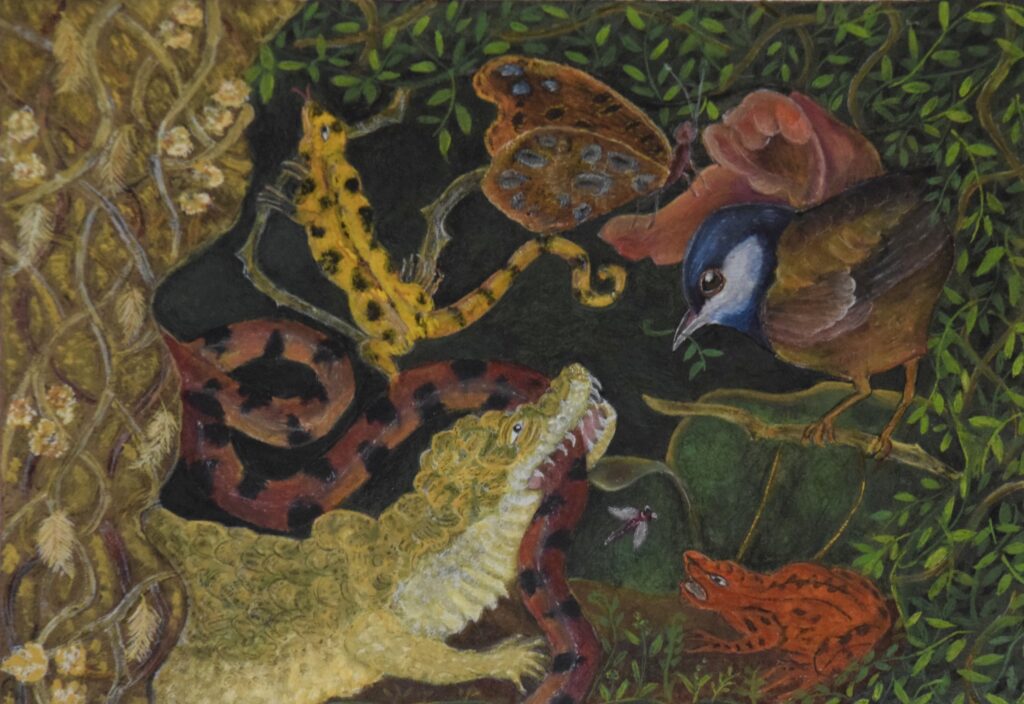
Author: Christine Cariati
A Tangled Bank: Spirals
Venetian Red Archive
Beginning in 2009, my colleague Liz Hager and I published a blog called Venetian Red. We wrote essays on artists and subjects that we were passionate about, and while our interests and obsessions were quite different, what united us was our mutual love of historical textiles and a fervent belief in the importance of art and decorative art in our lives. In recent years, as we both become absorbed in our studio practice, we stopped writing for Venetian Red, but the things we wrote about are still very much alive and central to our work. I’ve transferred a dozen or so of my posts that still resonate the most to this new blog. From time to time, as it relates to new paintings or textile projects, I will highlight one of these posts. In the meantime, they are available via the Archive to the right of this page, or you can access all of the posts Liz and I published at Venetian Red.
The first Venetian Red post I would like to highlight is The Play’s the Thing: A History of Toy Theater in Three Acts. After I began collecting Victorian paper theaters they inspired the layered and theatrical format of many of my paintings, such as The King’s Opera, above.
A Tangled Bank
A Tangled Bank is an ongoing series inspired by the work of Charles Darwin, specifically this (edited) last paragraph of his great work, On the Origin of Species (1860 edition). The five paintings below are the first in the series.
It is interesting to contemplate a tangled bank, clothed with many plants of many kinds, with birds singing on the bushes, with various insects flitting about, and with worms crawling through the damp earth, and to reflect that these elaborately constructed forms, so different from each other, and dependent upon each other in so complex a manner, have all been produced by laws acting around us… Thus, from the war of nature, from famine and death, the most exalted object which we are capable of conceiving, namely, the production of the higher animals, directly follows. There is grandeur in this view of life, with its several powers, having been originally breathed by the Creator into a few forms or into one; and that, whilst this planet has gone circling on according to the fixed law of gravity, from so simple a beginning endless forms most beautiful and most wonderful have been, and are being evolved.
,
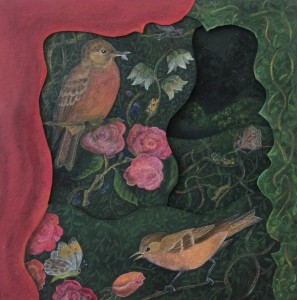
A Tangled Bank: Duet, 2015
Gouache on paper, 8″ x 8″
A Tangled Bank: The Bramble, 2015
Gouache on paper
A Tangled Bank: Waterlily, 2015
Gouache on paper
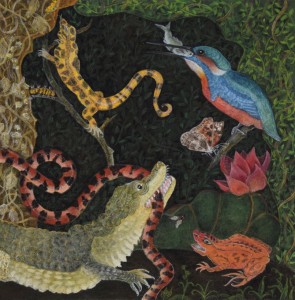
• A Tangled Bank: Kingfisher, 2015
Gouache on paper, 8″ x 8″
A Tangled Bank: Monkey, 2015
Gouache on paper, 8″ x 8″
Jean-Antoine Watteau’s Fêtes Galantes
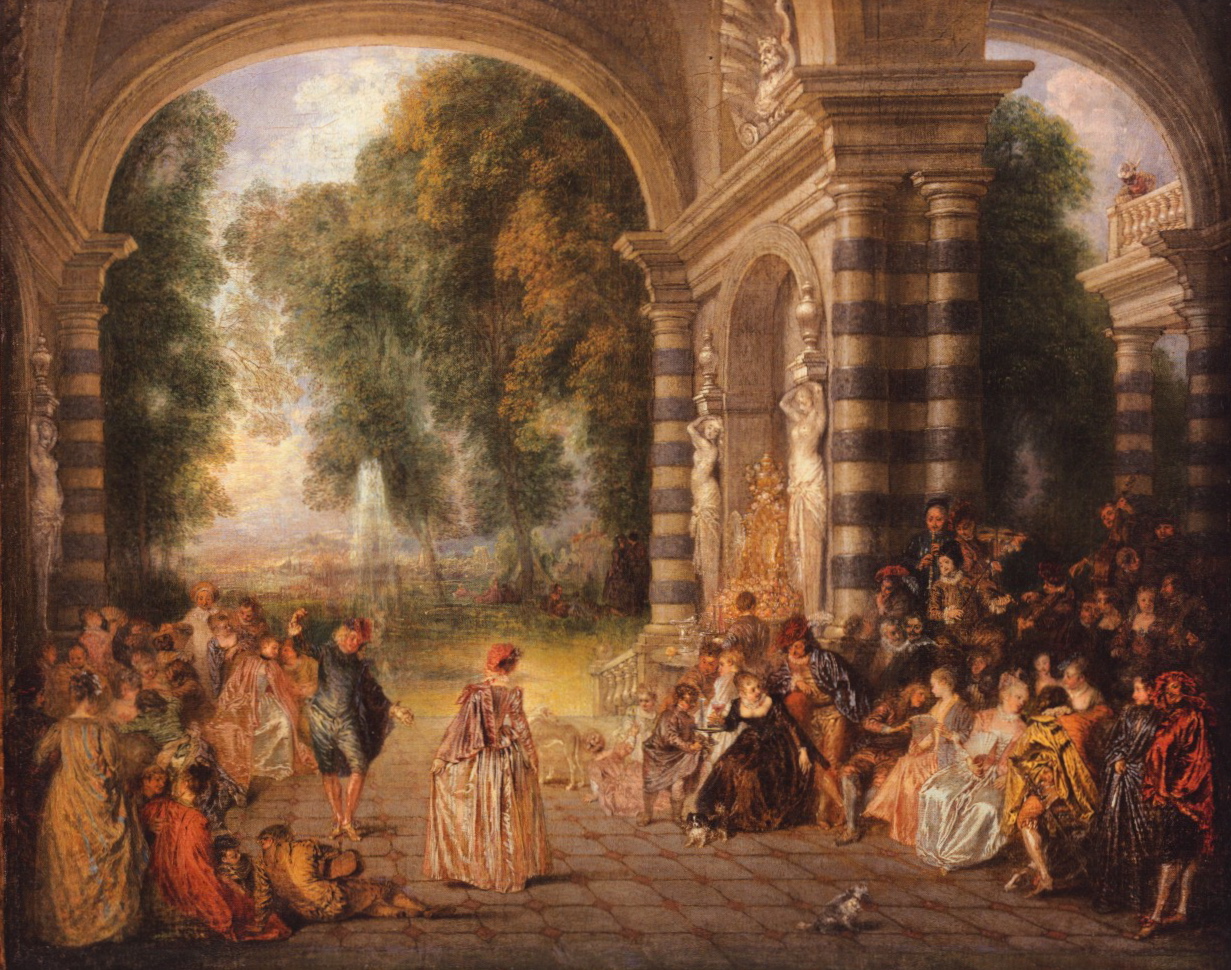 Jean-Antoine Watteau, Les Plaisirs du Bal, c. 1717
Jean-Antoine Watteau, Les Plaisirs du Bal, c. 1717
Oil on canvas
Bourgeois Bequest, 1811, Dulwich Picture Gallery
I recently had the pleasure of spending time with Jean-Antoine Watteau‘s (1684-1721) Les Plaisirs du Bal, which was on view at the Frick Collection while on loan from the Dulwich Picture Gallery. This is the most celebrated of Watteau’s series of poetic paintings which he called fêtes galantes.
John Constable said about Les Plaisirs du Bal that it looked like it was:
“painted in honey: so mellow, so tender, so soft and so delicious.”
In Les Plaisirs de Bal, sumptuously-dressed revelers, many in costume or fancy dress, converse, dance and flirt in a lovely, imagined park. As a contrast to court painting, Watteau’s idyll has a relaxed, informal air—it portrays an earthly paradise. This intensely romantic painting about love, the various stages of courtship and the joys of intimacy, is so potent because Watteau evokes many moods at once—languorous sensuality, the lighthearted gaiety of youth, the pleasures of music and dance—all embellished with a touch of melancholy and irony.
Watteau’s rich patrons liked to see themselves portrayed as benevolent figures in harmony with nature. The opulent setting, which depicts a Renaissance villa with caryatids and a fountain in a lush parkland, borrows much of its landscape ideas from paintings by Rubens and Veronese, and updates the genre to the 18th century. Watteau’s fêtes galantes, inspired by ballet and commedia dell’arte, are at the same time idyllically bucolic and extremely theatrical.
Even though Watteau’s Les Plaisirs du Bal takes place in daylight, it brought to my mind this dreamy, evocative poem by poet Paul Verlaine, which was written in the 18th-century style, and inspired by Watteau’s fêtes galantes.
Clair de Lune
Votre âme est un paysage choisi
Que vont charmant masques et bergamasques,
Jouant du luth, et dansant, et quasi
Tristes sours leurs déguisements fantastiques.Toute en chantant sur le mode mineur
L’amour vainqueur et la vie opportune,
Ils n’ont pas l’air de croire à leur bonheur
Et leur chanson se mêle au claire de lune,Au calme clair de lune triste et beau,
Qui fait rêver les oiseaux dans les arbres
Et sangloter d’extase les jets d’eau,
Les grands jets d’eau sveltes parmi les marbres.—from Paul Verlaine’s Fêtes Galantes, 1869
(Moonlight
Your soul is a chosen landscape
Where charming masqueraders and revelers go,
Playing the lute, and dancing, and almost
Sad beneath their fantastic disguises.All sing in a minor key
Of victorious love and the opportune life,
They do not seem to believe in their own happiness
And their song mingles with the moonlight,With the still moonlight, sad and beautiful,
Which sets the birds dreaming in the trees
And the fountains sobbing in ecstasy,
The tall slender fountains among marble statues.)
